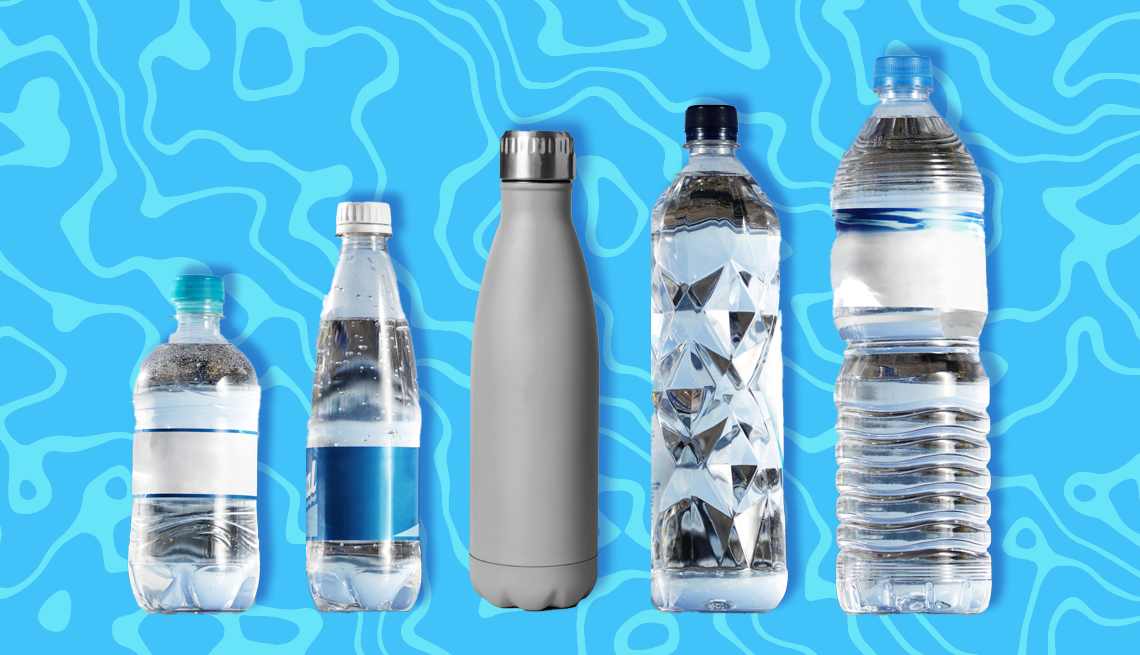AARP Hearing Center


Standing in front of the water aisle in stores can feel overwhelming. Once we filled our glasses with the simplest drink that just flowed from the tap, but now the choices are dizzying: vitamin water, hydrogen water, sparkling water, electrolyte water.
Americans spent an estimated $49 billion in 2023 on bottled water and drank about 16 billion gallons, according to the Beverage Marketing Corp. That’s a lot of bottled-up H2O.
Though it’s true that staying hydrated is crucial to overall health — and many older adults are dehydrated — it’s not clear whether spending extra money on something that’s included in your monthly water bill can make you any healthier.
6 Risks of Dehydration
Older people are at higher risk of dehydration, due in part to decrease in thirst. In some older adults, the loss of just 2 to 3 percent of body fluid can cause physical and cognitive problems. One study found up to 40 percent of older adults may be underhydrated. Dehydration is linked to diabetes, heart failure and stroke and can lead to:
- Delirium
- Confusion
- Infections
- Falls
- Fractures
- Seizures
How are all the drinking water choices different, and is one better than another?
Tap water
In general, the United States has some of the world’s safest drinking water. Some U.S. water is safe to drink directly from the source, while water from other sources must be treated before consumption because of potential chemical and bacterial contamination.
On April 10, the Biden administration finalized limits on “forever chemicals” in drinking water, requiring utilities to reduce them to the lowest level that can be reliably measured. Government officials say these chemicals, called PFAS (polyfluoroalkyl substances), are linked to liver disease, heart disease and certain cancers. The administration has also proposed rules that would require cities to replace lead water pipes within 10 years.
An estimated 43 million Americans receive water from a private underground well. Well water can be cloudy, have a rotten egg odor from hydrogen sulfide, and leave rust stains. This water is not regulated, so homeowners are responsible for ensuring their supply is safe for drinking, usually through recommended annual testing.
Other than private well water, the U.S. Environmental Protection Agency (EPA) regulates and monitors public water supply and tests and treats the water.
Water that doesn’t taste or smell good may be confused with water that is not good for you. A safe amount of chlorine kills bacteria and viruses and keeps water pipes clean, but it doesn’t taste good. Chlorine can be removed with a filter.
“Water can sometimes have a bad smell, taste or appearance, but these features don’t usually last long or indicate a public health concern,” says registered dietitian Kourtney Johnson. “Chlorine, chemicals or a medicine-like taste or smell don’t typically mean there’s an immediate health threat.”
Tap water that doesn’t taste or smell good, as well as news reports of problems with the water coming from our faucets, may explain in part why millions of Americans turn to bottled water.
Bottled water
The U.S. Food and Drug Administration (FDA) strictly regulates bottled water production and distribution. The FDA has set out Current Good Manufacturing Practices (CGMPs) that require bottled water companies to maintain sanitary conditions throughout manufacturing and transportation, protect the approved water sources and test the final product.




































































More From AARP
Best Exercise for Lowering Blood Pressure
New study finds this is #1
Quiz: Health Benefits of Gardening
Having a green thumb boosts your well-being
11 Natural Foods to Help Boost Your Metabolism
Some foods and spices can even help burn belly fat
Feel Revitalized With This 10-minute Chair Yoga Class
Learn various poses that help with flexibility and mobility
Recommended for You